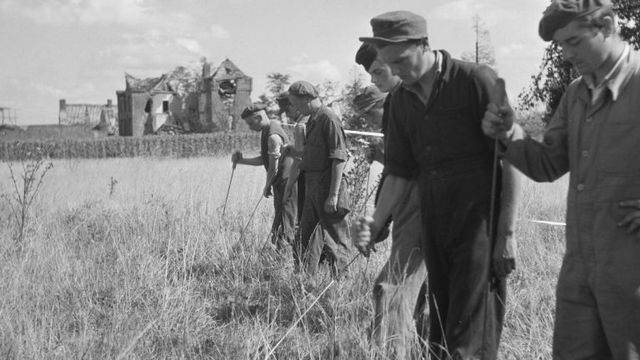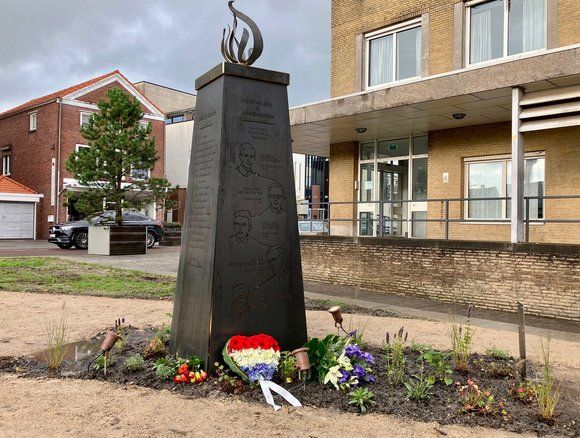Vector: Explosives - forever a danger!
During the struggle for liberation in October 1944, alot of unexploded artillery was left behind in North Brabant, which still caused fatalities even after the liberation.
In the municipality of Zundert, many antitank mines, among other things, were left behind near the Hazenmeren and the heath was left full of so-called 'duds' (unexploded explosives). These posed a great danger to civilians as they were not familiar with the dangers and, for boys in particular, these explosives had tremendous appeal with all the risks involved. The defeated German troops had left behind a lot of explosive material, and the U.S. Timberwolves Division simply did not have enough human resources to defuse all that danger. In some villages liberated by the American forces there were so many mines that the population was advised not to go off the paved roads. In places where the American forces suspected that there were mines and other things along the through roads, white ribbons were stretched out to show people to avoid these areas.
Despite this advice, une…
In the municipality of Zundert, many antitank mines, among other things, were left behind near the Hazenmeren and the heath was left full of so-called 'duds' (unexploded explosives). These posed a great danger to civilians as they were not familiar with the dangers and, for boys in particular, these explosives had tremendous appeal with all the risks involved. The defeated German troops had left behind a lot of explosive material, and the U.S. Timberwolves Division simply did not have enough human resources to defuse all that danger. In some villages liberated by the American forces there were so many mines that the population was advised not to go off the paved roads. In places where the American forces suspected that there were mines and other things along the through roads, white ribbons were stretched out to show people to avoid these areas.
Despite this advice, unexploded munitions and mines caused many casualties among the Westbranders (people from West Brabant). Several inhabitants also lost their lives in the towns that today fall under the present municipality of Zundert. For example, Joannes van Bergen from Wernhout was killed when a projectile exploded, and 13-year-old Johannes Hense and 17-year-old Cornelis van Aert lost their lives when their horse and wagon hit an anti-tank mine. In the town of Rijsbergen, the clearing of ammunition also came too late for some victims: on 1 November 1944, 76-year-old Frans van Meer stepped on a landmine and 9-year-old Adianus Oostvogels played with a hand grenade that subsequently exploded.
After the liberation of West Brabant in early November 1944, the task of clearing of mines and other explosive material was given to the British Engineers, and the Polish Engineers also did their part. A total of just under 1,000 men were involved, but they still had other duties such as maintaining the often heavily damaged road network in West Brabant.
That same winter, the Dutch Army under construction established the Mine Clearance Service, initially a small unit that was to be trained by the British Engineers and which throughout winter went to work under British supervision. After the end of the war, the British Engineers gradually withdrew from the Netherlands, leaving the Mine Clearance Service on its own. From the summer of 1945, German Prisoners of War largely took over this dangerous work under the supervision of the Dutch mine-clearers.
The monument “Beacon of Freedom” honours civilians and soldiers in Zundert who lost their lives while fighting for the freedom of the Netherlands.





